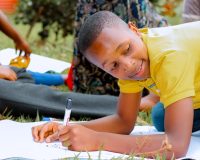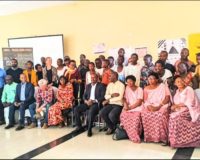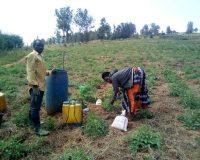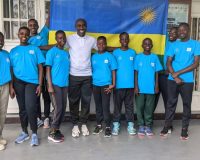UNM, using its model bringing on board parents, teachers and children’s structures has piloted a campaign on school reintegration in Kamonyi, Nyanza and Rwamagana, focusing on two areas:
The schools as final destination;
The family as the origin.
UNM in using all existing structures to promote children’s rights wants to build a sustainable mechanism that deals with the issue of drop out, its causes, its effects and strategies to minimize or eradicate the problem.
On 29th of April 2016, from 10.00 am to 1.30 pm, a round table discussion brought together District authorities in charge of Education, SEO from all sectors, Uyisenga Ni Manzi Staff (UNM), journalists, parents representatives and schools representatives. It was co-chaired by Mr Diogene Kayijuka, Director of Education in Kamonyi District (DEO) and co-chaired by Mr Chaste Uwihoreye, UNM National Coordinator. A total of 25 people participated as follow:
The DEO welcomed the idea from UNM to bring together all actors to reflect on best ways/ strategies to bring back to school children who dropped out schools and to maintain them in schools, as well as preventing new drop out.
The previous work done by UNM, said Mr Chaste has focused on the rehabilitation of lives in the aftermath of the genocide against Tutsi, as well as the promotion of children’s rights, especially OVC.
Having supported education in Gacurabwenge sector over four years ago in two strategic schools : G S Saint Jean Bosco and Roza Mystica, the new programme to fight against drop out as a serious threat should be a concern of all actors; schools and local authorities, parents and community members, other district partners to ensure the linkages between child well being/care and education.
Six representatives of parents shared how different community structures established in 8 villages of Gacurabwenge Sector, have recently reintegrated 112 pupils in primary schools and 39 students in secondary.
According the UNM CEO, an assesment has identified 4 factors on the problem of dropping out :
1. Mindset issue: parents, school and local authorities not flexible to change
2. Poverty: children have many opportunities not previously offered to parents.
3. Weak Follow up: caregivers, teachers and parents not very committed
4. Family conflicts: misunderstanding and irresponsibility of parents
Positive and starting point: Children expresses their will to study and the environment should support them
How UNM approach/model does work?
It comes from a philosophy with 2 branches: The prevention and the Investment
Bearing in mind that investing in children is the key for ending the poverty and cut off the chain that poor parents give birth to poor children for generations and generations. In this process we want to come together, and see The Child as a project, and a treasure: once we don’t care about this project, we will fail and our future will be problematic.
Prevention is better than cure: In Kigali, there is a serious issue of street kids. UNM wants to deal with the problem from its origin; the rural community.
Given the fact that the mindset change remain a challenge, there is a need of much efforts and strong commitment among all stakeholders operating in the district to succeed the reintegration and the retention of students in schools. This requires that parents, teachers, children as well as other community members are involved.
The District concern in fighting the school dropout
The District Education Officer exposed children’s Problems of in Kamonyi that may cause drop out:
1. School age
2. Children who are not enrolled
3. Drop out
4. Some cases of parents and teachers inflexible
The mindset has been identified with many actors, not only parents but also teachers and some authorities who don’t understand the context, the recent declaration made by HE the President of the Republic on drop out and street kids has brought every actor to react; hopefully the problem will be soon solved thanks to joint efforts, good coordination and improved communication.
Participants have noticed that the power of mobilization in the process is very crucial and they adopted to adapt the methodology in working with communities and change the negative perceptions towards authorities and NGOs.
There is a need to keep in mind that considering every child in communities as his/her is a steep for success.
Parents request that authorities should sensitize school authorities to be more flexible and friendly with children, especially those who are reintegrated in this process.

RECOMMENDATIONS
There is a need of creating a horizontal channel that goes from the school to community instead of reporting numbers to the District.
The school reintegration should be well coordinated by SEO’s and DEO’s with mechanisms of monitoring and evaluation
The campaign/sensitization should be uniformized in all sectors of Kamonyi district, focusing on parents, teachers, schools and local authorities for its effectiveness.
There is a need of steering committees for coordination at all levels (cells, sectors, district), UNM should provide technical support when necessary.
There is a need of team of teachers mentors in different to ensure counseling to students reintegrated, so they find the school as safe and friendly space.
The communication is a must in this process at regular basis to monitor reports (data, identification, achievements, challenges and best practices).
Initiate children’s clubs and involve them in the process/ child participation.
More flexibility in schools and bring all teachers to support this campaign for the best interest of our children.
Extend the model involving all parties to all sectors of Kamonyi district.






